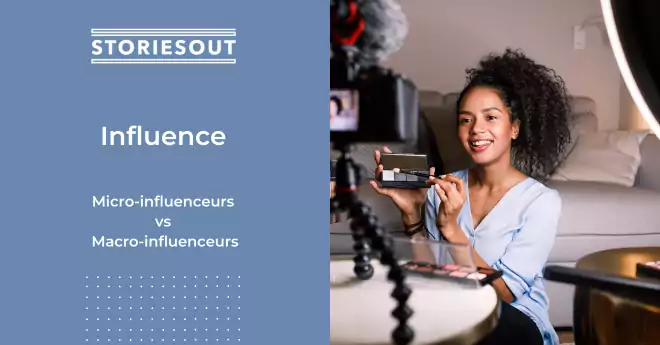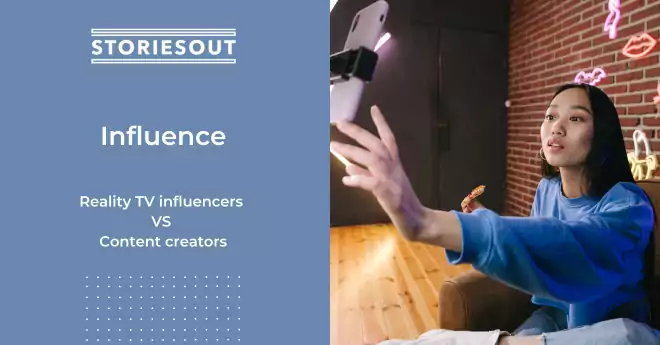More and more brands are choosing to use influencers for their communication campaigns, but who should they turn to ? Micro vs Macro influencers, how to choose ? First of all, the decision depends on the objectives of the communication campaign. So what’s the difference ?
Micro-influencers :
Micro-influencers are influencers who generally have between 1,000 and 100,000 followers on social media.
Strengths :
✅ An engaged and loyal audience: Micro-influencers often have a highly engaged and loyal audience, which is reflected in higher engagement rates on the content they create.
✅ Expertise in a specific field : Micro-influencers are often seen as experts in their field, which can help establish a brand’s credibility in that area.
✅ More authentic relationships with their audience : Micro-influencers often have closer relationships with their followers, which can help create a close and organic connection with a targeted audience.
✅ Lower costs : Micro-influencers have lower costs than macro-influencers for brand collaborations, which can be advantageous for small businesses or limited budgets.
Weaknesses :
⚠️ Reduced audience : Micro-influencers have a smaller audience compared to macro-influencers and often a specific audience, so if the goal is to target a large and mainstream audience, this type of influencer will limit the reach of a campaign.
⚠️ Less qualitative content : Since micro-influencers are not necessarily communication professionals and do not have the same material and human resources (dedicated communication campaign teams) as macro-influencers, there may be differences in the quality of the content they create for a brand.
⚠️ Risk of engagement loss : Micro-influencers, in case of audience growth and increased competition in the industry, generally lose engagement.
In summary, micro-influencers can be a wise choice for brands looking to target a specific audience and establish authentic relationships with their audience. However, it is important to keep in mind that working with micro-influencers may have certain limitations in terms of reach and content quality.
Macro-influencers :
Macro-influencers have a larger audience, with more than 100,000 followers on social media.
Strengths :
✅ High-quality content creation : Macro-influencers are often professionals in content creation, which can result in high-quality brand collaborations and marketing success directly associated with the quality of the content.
✅ Wider reach : Macro-influencers have a larger audience than micro-influencers, which can help reach a diverse audience and therefore quickly increase a brand’s visibility.
✅ Visibility for big brands : Macro-influencers are more visible than micro-influencers, which can help reinforce a brand’s credibility.
✅ Social validation : Macro-influencers are often seen as role models, and that’s where social proof (marketing phenomenon) comes into play. For example, if a public figure wears/uses a product, it becomes attractive and therefore consumers will want to get it to feel a sense of social belonging.
Weaknesses :
High costs : Macro-influencers often have higher costs than micro-influencers for brand collaborations, which can be an obstacle for small businesses or limited marketing budgets.
⚠️ Variable engagement : Macro-influencers have a larger audience, but their engagement with their followers is often less significant than that of micro-influencers.
⚠️ Risk of lack of credibility : Macro-influencers can be seen as too commercial, which can reduce their credibility and limit the impact of the marketing campaign. Moreover, if the image of the macro-influencer is tarnished by a scandal, the image of the advertiser’s brand may indirectly suffer.
In summary, macro-influencers can be a smart choice for large brands looking to reach a wider audience and strengthen their credibility. However, it is important to understand that working with macro-influencers can come with high costs and risks in terms of engagement, credibility, and authenticity of their relationships with their audience.
If the goal of the marketing campaign is to target a specific niche or build trust with a targeted audience, it may be more effective to work with micro-influencers. If the goal is to reach a larger audience and quickly increase brand awareness, working with macro-influencers may be more appropriate.
It is also possible to combine the two approaches by working with micro-influencers to create specific content and thus certify the quality of the brand/product/service, then using macro-influencers to reach a wider audience, confirm the quality, and finally increase the visibility of the brand.




